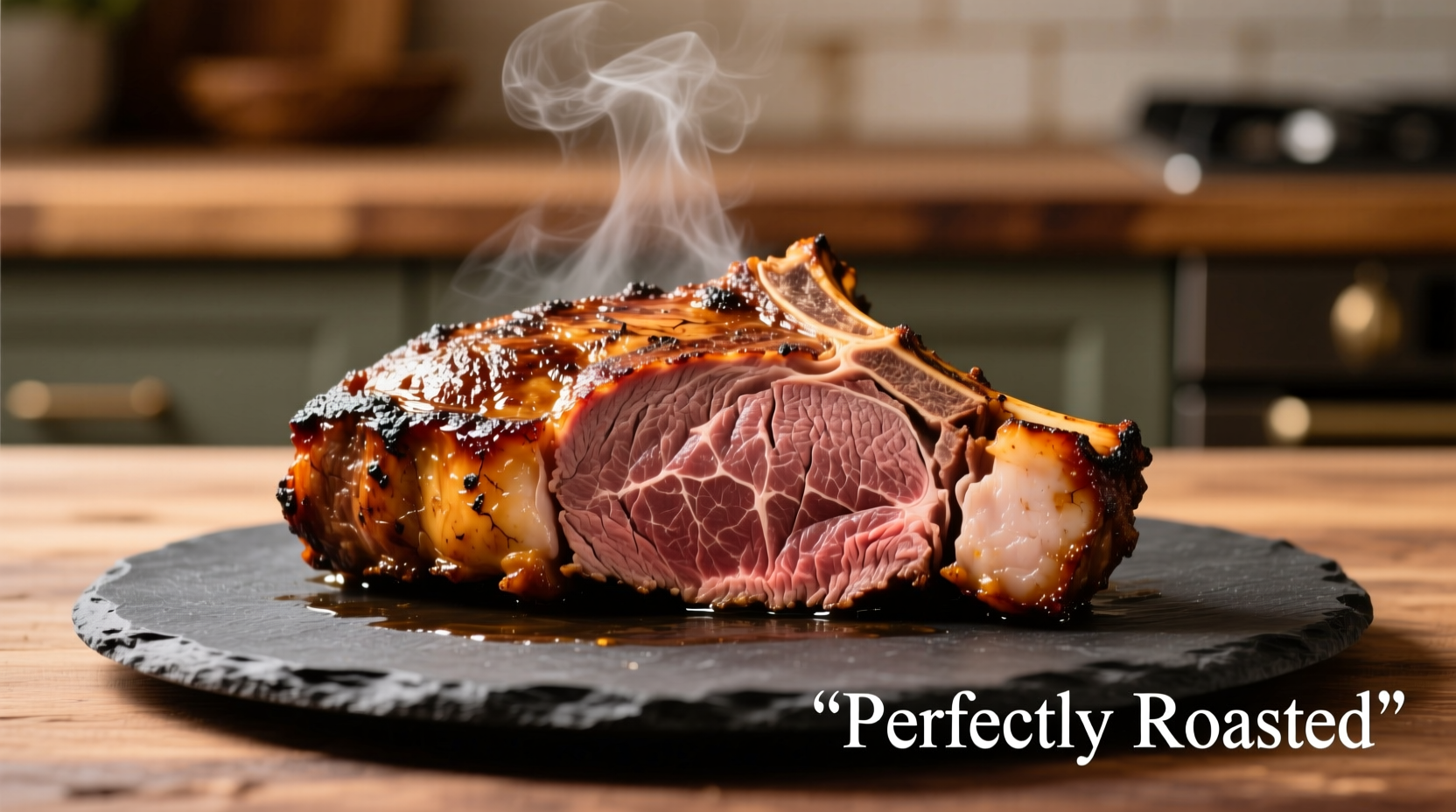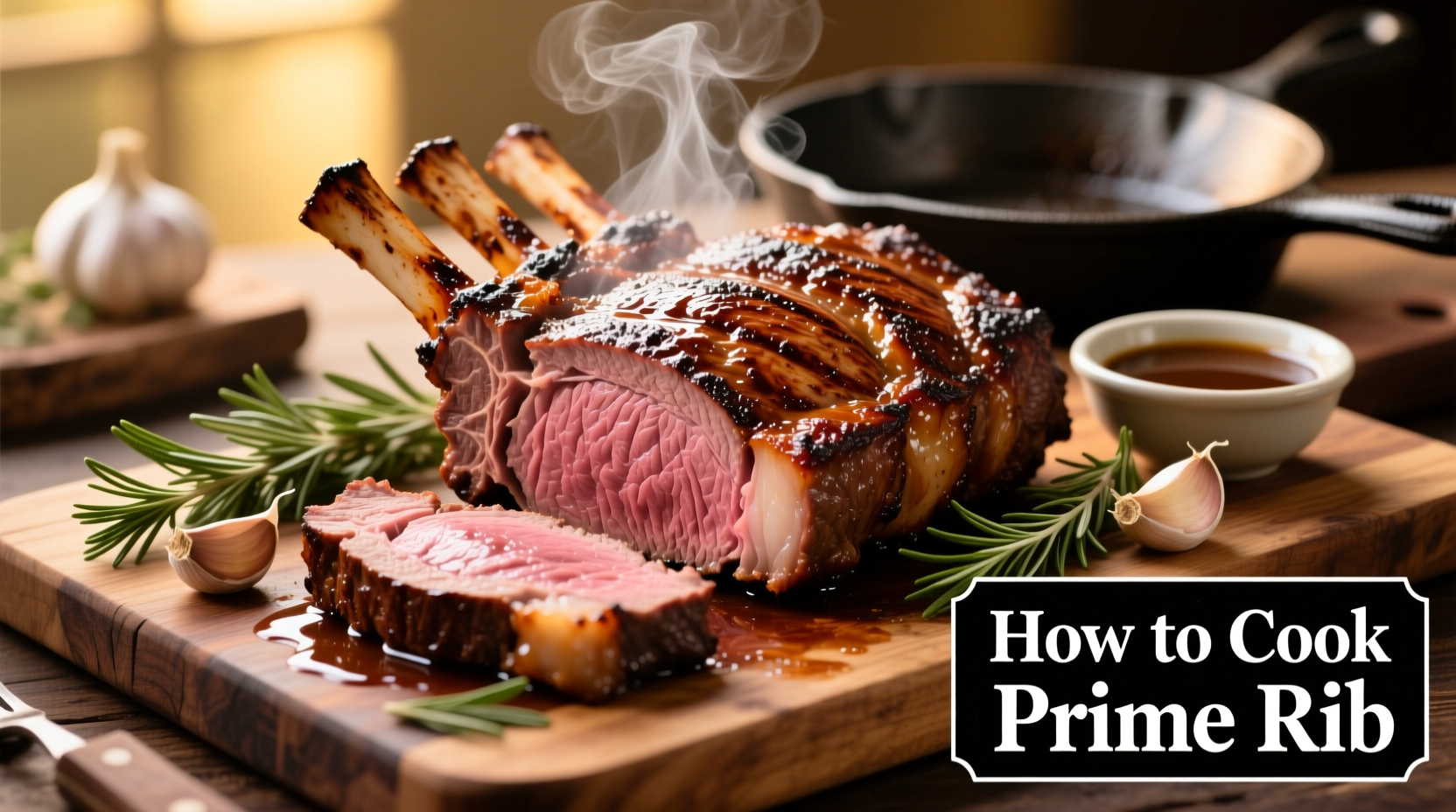Perfectly cooked prime rib roast beef reaches an internal temperature of 120-125°F (49-52°C) for rare, 130-135°F (54-57°C) for medium-rare, or 140-145°F (60-63°C) for medium. Allow 15-20 minutes per pound at 325°F (163°C), followed by a 30-45 minute rest before carving. This method ensures tender, juicy meat with a flavorful crust.
Nothing impresses guests quite like a perfectly cooked prime rib roast beef. Whether you're preparing for a holiday feast or a special family dinner, mastering this culinary centerpiece elevates your cooking from ordinary to extraordinary. The secret lies not in complicated techniques, but in understanding the science of meat, precise temperature control, and proper resting time. In this comprehensive guide, you'll learn professional chef methods adapted for home kitchens, complete with temperature charts, seasoning secrets, and troubleshooting tips that guarantee success every time.
Prime Rib Selection: Making the Right Choice
Selecting quality meat forms the foundation of exceptional prime rib. Understanding your options prevents costly mistakes and ensures optimal results. The USDA grading system provides crucial information about marbling and tenderness:
| USDA Grade | Marbling Level | Recommended Cooking Method | Price Range (per lb) |
|---|---|---|---|
| Prime | Abundant | Traditional roasting | $14-18 |
| Choice | Moderate | Low-temperature roasting | $10-14 |
| Select | Slight | Braising or slow roasting | $7-10 |
Prime grade offers the best marbling for traditional roasting, while Choice grade requires more careful temperature control to prevent dryness. Bone-in roasts provide better heat distribution and richer flavor, though boneless versions offer easier carving. For standard portions, plan for one pound per person when serving with sides.
Pre-Cooking Preparation: The Foundation of Flavor
Proper preparation transforms good prime rib into exceptional. The 24-48 hour dry brine process significantly improves texture and flavor penetration:
- Remove packaging and place roast on a wire rack over a baking sheet
- Pat completely dry with paper towels
- Apply 1 teaspoon kosher salt per 5 pounds of meat evenly over all surfaces
- Refrigerate uncovered for 24-48 hours
- Remove from refrigerator 2-3 hours before cooking to reach room temperature
This process allows salt to penetrate deeply while drawing out excess surface moisture, creating the perfect foundation for a flavorful crust. According to the USDA Food Safety and Inspection Service, bringing meat to room temperature before cooking ensures more even heat distribution and prevents the exterior from overcooking while the interior reaches proper temperature.
Seasoning Strategies for Maximum Flavor
While prime rib's rich flavor needs minimal enhancement, the right seasoning combination elevates the experience. The classic herb rub balances earthiness with brightness:
- 2 tablespoons coarse sea salt
- 2 tablespoons freshly cracked black pepper
- 2 tablespoons chopped fresh rosemary
- 2 tablespoons chopped fresh thyme
- 4 cloves garlic, minced
- 2 tablespoons olive oil
Mix ingredients thoroughly and massage into all surfaces of the roast 30 minutes before cooking. For those preferring simplicity, a generous coating of just salt and pepper creates a beautifully caramelized crust that enhances the meat's natural flavor. Professional chefs often add a final sprinkle of flaky sea salt just before serving to provide textural contrast.

Cooking Process: Temperature Control is Everything
Mastering temperature control separates successful prime rib from disappointing results. The reverse-sear method delivers the most consistent results for home cooks:
- Preheat oven to 250°F (121°C)
- Place roast on rack in roasting pan fat-side up
- Insert oven-safe meat thermometer into thickest part
- Raise temperature to 325°F (163°C) when internal temperature reaches 90°F (32°C)
- Continue cooking until 10-15°F below desired final temperature
- Remove and rest, covered loosely with foil, for 30-45 minutes
This approach ensures even cooking from edge to center while developing a flavorful crust. The National Agricultural Library confirms that the carryover cooking effect during resting adds 5-15°F to the internal temperature, making precise temperature monitoring essential.
Temperature Guide for Perfect Doneness
Understanding the relationship between cooking temperature and final doneness prevents common mistakes. This timeline shows the complete cooking process:
| Cooking Stage | Internal Temperature | Visual Indicators | Time Estimate (per lb) |
|---|---|---|---|
| Room Temperature Start | 65-70°F (18-21°C) | Cold to touch | N/A |
| Initial Cooking Phase | 90-110°F (32-43°C) | Pale pink, cool center | 10-12 min |
| Target Removal Temp | 110-125°F (43-52°C) | Warm red center | N/A |
| After Resting | 120-135°F (49-57°C) | Bright red to pink center | N/A |
For medium-rare perfection (the recommended doneness for prime rib), remove the roast from the oven at 120-125°F (49-52°C). The resting period allows juices to redistribute while the temperature rises to the ideal 130-135°F (54-57°C) range. Overcooking remains the most common mistake—remember that prime rib continues cooking after removal from the oven.
Resting and Carving: The Final Crucial Steps
Proper resting transforms good prime rib into exceptional. During this critical phase:
- Cover loosely with foil to retain heat without trapping steam
- Rest for 15 minutes per pound (minimum 30 minutes)
- Place on cutting board with bone side down for stability
- Use a long, sharp carving knife with smooth slicing motion
- Cut perpendicular to the bone in 1/2 inch slices
Carving too soon releases precious juices onto the cutting board rather than staying in the meat. Professional chefs recommend placing carved slices on a warm platter rather than stacking them, which prevents steaming and maintains the desirable crust texture.
Troubleshooting Common Prime Rib Problems
Even experienced cooks encounter challenges. Here's how to address frequent issues:
Problem: Uneven Cooking
Solution: Position the roast with the thicker end toward the back of the oven where heat circulation is typically stronger. Rotate the pan 180 degrees halfway through cooking for more even heat exposure.
Problem: Lack of Crust Development
Solution: Increase oven temperature to 450°F (232°C) for the final 10-15 minutes of cooking. Ensure the surface is completely dry before returning to the oven.
Problem: Overcooked Exterior
Solution: Next time, start at a lower temperature (225°F/107°C) and monitor internal temperature more frequently during the final cooking phase.
Serving Suggestions for a Complete Experience
Prime rib shines when paired with complementary sides that enhance rather than compete with its rich flavor. Classic accompaniments include:
- Horseradish cream sauce (freshly grated horseradish, sour cream, lemon juice)
- Yorkshire pudding (traditional British accompaniment)
- Roasted root vegetables (parsnips, carrots, potatoes)
- Creamed spinach or roasted asparagus
- Simple green salad with vinaigrette
The key to successful pairing lies in balancing richness with acidity and texture. A crisp green salad with lemon vinaigrette cuts through the fat, while roasted vegetables provide earthy sweetness that complements the meat's umami notes.











 浙公网安备
33010002000092号
浙公网安备
33010002000092号 浙B2-20120091-4
浙B2-20120091-4